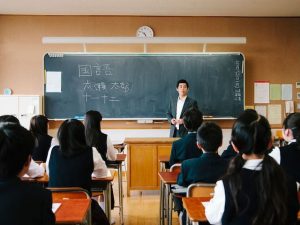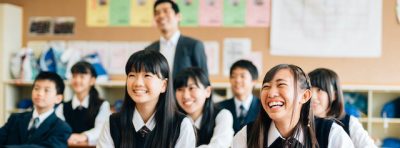 Much like the United States, the education system in Japan consists of elementary school, middle school, high school, and university. The system there is divided into 5 cycles:
Much like the United States, the education system in Japan consists of elementary school, middle school, high school, and university. The system there is divided into 5 cycles:
- Yōchien(幼稚園, Nursery school) from 3 to 6 years old.
- Shōgakkō(小学, Elementary school) from 6 to 12.
- Chūgakkō(中学, Middle School) from 12 to 15.
- Kōkō(高校, High school) from 15 to 18.
- Daigaku(大学, University) or Senmongakkō (専 門 学校, Vocational school) in general with a duration of 2 to 4 years.
School is compulsory up through the middle school grades, and most students attend a public school. After that, however, many students transfer to private schools for high school. Tests are required to get into most high schools and universities to check student preparation for those levels. These tests are extremely difficult, and many students attend special “cram” classes to prepare for them. There is a great deal of competition between students to get into the right schools.
Some of the more interesting things about Japanese education is that there is a class time period allotted for morals and ethics education. This is not so much to have a right or wrong lesson on what students should do, but rather a time to talk about consequences of their actions and how they would impact their lives and those around them. Additionally, there are no janitors in the schools! Students participate in the cleaning of their schools, and they divide into teams to get the work done.
The Japanese people are very dedicated to educating their students, both academically and morally. Their education system is highly regarded as one of the best in the world.





